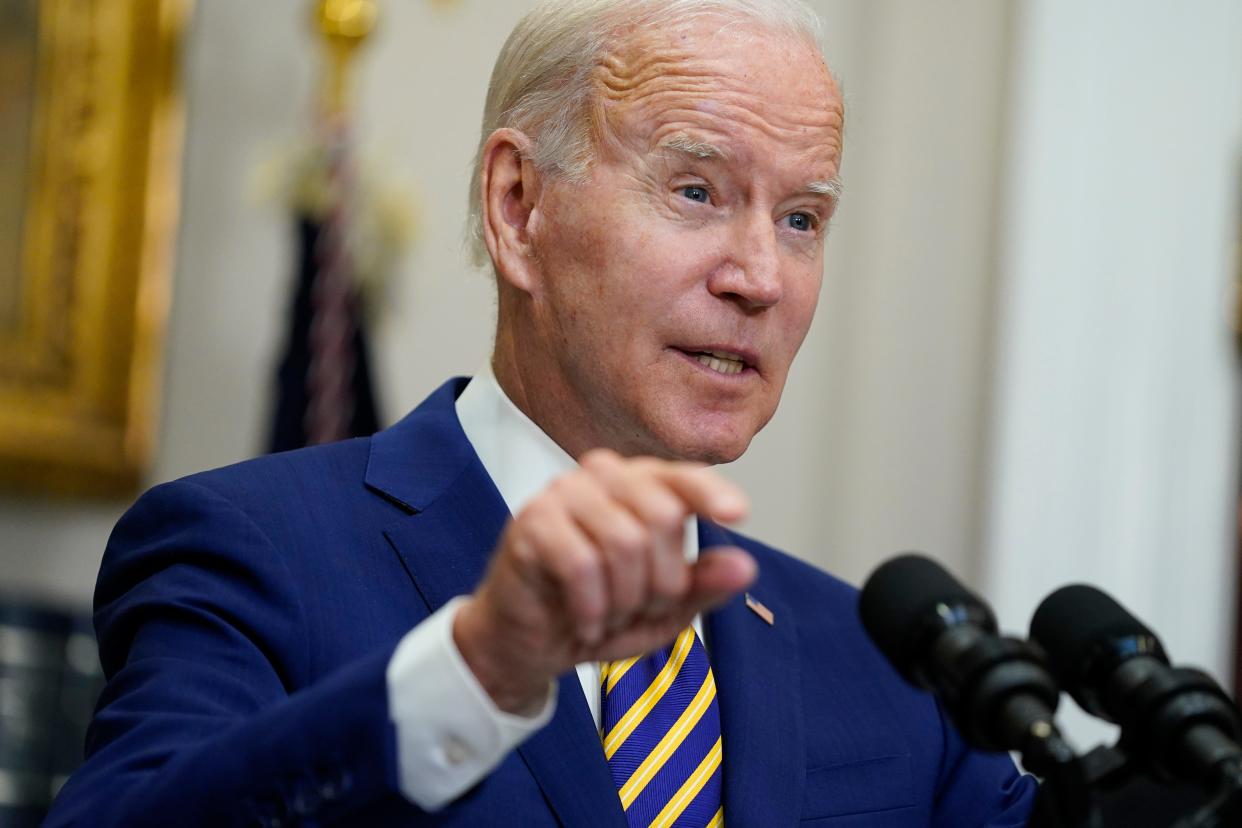Some borrowers may not see their student loans forgiven after all. Here's why

- Oops!Something went wrong.Please try again later.
The White House updated President Joe Biden’s student loan debt forgiveness guidelines Thursday amid ongoing criticism and opposition from legal firms and state leaders.
Biden’s plan proposes a cancellation of $20,000 in student loan debt for Pell Grant recipients and $10,000 for many other borrowers. There are income limitations, and only those earning up to $125,000 a year individually, or those who are part of a household where total income is no more than $250,000 are eligible.
But just days away from releasing an application in early October for the relief program, the administration said many private loan borrowers would no longer be eligible under the plan.
CBO:Biden student loan debt cancellation will cost about $400 billion
What types of student loans are now disqualified from the forgiveness program?
Before Thursday, borrowers with privately owned, federally backed student loans qualified for debt forgiveness if they had consolidated their loans into the Direct Loans program.
But according to new guidelines, borrowers with Federal Family Education Loans Program (FFELP) or Federal Perkins Program loans not held by the U.S. Department of Education will no longer qualify for one-time debt relief through consolidation. They will only be eligible for forgiveness if they had applied for consolidation before Thursday.
What is an FFELP loan? What is a Perkins loan?
The Federal Family Education Loan Program was a system of private student loans, issued and managed by private banks but subsidized and guaranteed by the federal government, between 1965 and 2010. (A subsidized loan is one that doesn't accrue interest while you are still enrolled in college courses.) A Perkins loan was a federal student loan with low interest for students who had financial need, but the program was discontinued in 2018.
Related:Consolidating or refinancing your student loans isn't always the best move. Here's why
How many Oklahomans will be affected by the change in guidelines?
The number of Oklahomans likely affected by the new guidelines for FFELP and Perkins loans is currently unclear. According to earlier White House estimates in September, nearly 454,000 Oklahoma residents could have qualified for student debt relief under Biden's plan. As of Thursday, nearly 800,000 borrowers nationwide would be excluded from relief, officials told NPR.
"As recently as (Wednesday) the (student aid) site said they were working on a solution for these borrowers. This is a gut punch, to say the least," Betsy Mayotte, president and founder of The Institute of Student Loan Advisors, tweeted Thursday.
What are the pros and cons to consolidating loans?
While consolidating loans could lower monthly payments and allow for a longer repayment period for certain borrowers, others might have lost certain advantages with the consolidation, like interest rate discounts, principal reduction rebates or other benefits.
"Many (FFELP) borrowers have lender incentive interest rates that they would lose by consolidating, so it made sense for them to wait for the update," Mayotte tweeted Thursday. "This is one of the most harmful decisions I've seen come out of the (Education Department) in a long time."
Related:Biden's student loan debt forgiveness plan met with skepticism in Oklahoma
Why did the White House change its guidelines?
The White House gave no reason for the change in guidance for the program's conditions Thursday. But the revision came the same day several GOP-led states sued the Biden administration in opposition of the relief plan.
Borrowers had been able to consolidate FFELP loans into accounts directly owned by the Education Department, which then would have given the government authority to cancel borrowers' debts under Biden's plan. The states argued the mass cancellation would lead to more borrowers consolidating their loans, which in turn would constitute harm to the private lenders who earned revenue from the loans.
“Our goal is to provide relief to as many eligible borrowers as quickly and easily as possible,” a department spokesperson said. “And this will allow us to achieve that goal while we continue to explore additional legally available options to provide relief to borrowers with privately owned FFEL loans and Perkins loans, including whether FFEL borrowers could receive one-time debt relief without needing to consolidate.”
In addition, Pacific Legal Foundation sued the Biden administration earlier this week, arguing that Biden's plan was unconstitutional and would cause an unfair burden on taxpayers. Lawyers with the libertarian-leaning law firm also argued Biden no longer had grounds to cancel student debt as part of ongoing COVID-19 relief efforts since Biden had recently said in a 60 Minutes interview that “the pandemic is over.”
This article originally appeared on Oklahoman: Joe Biden updated his loan forgiveness plan and it could cut out some

